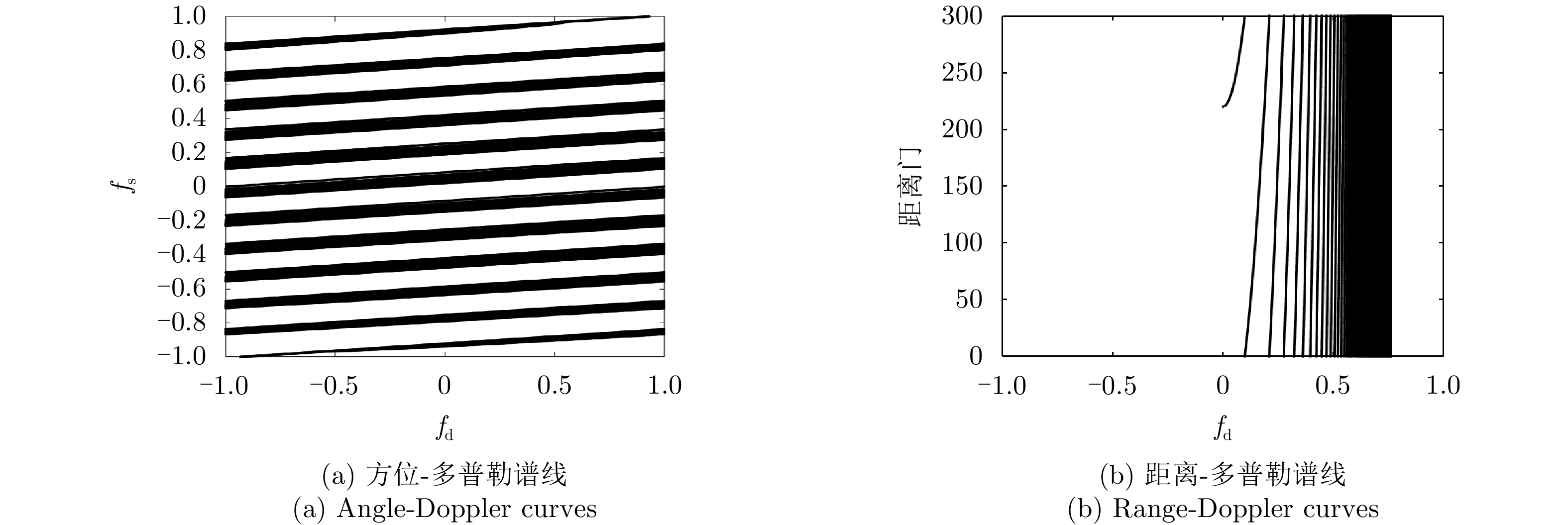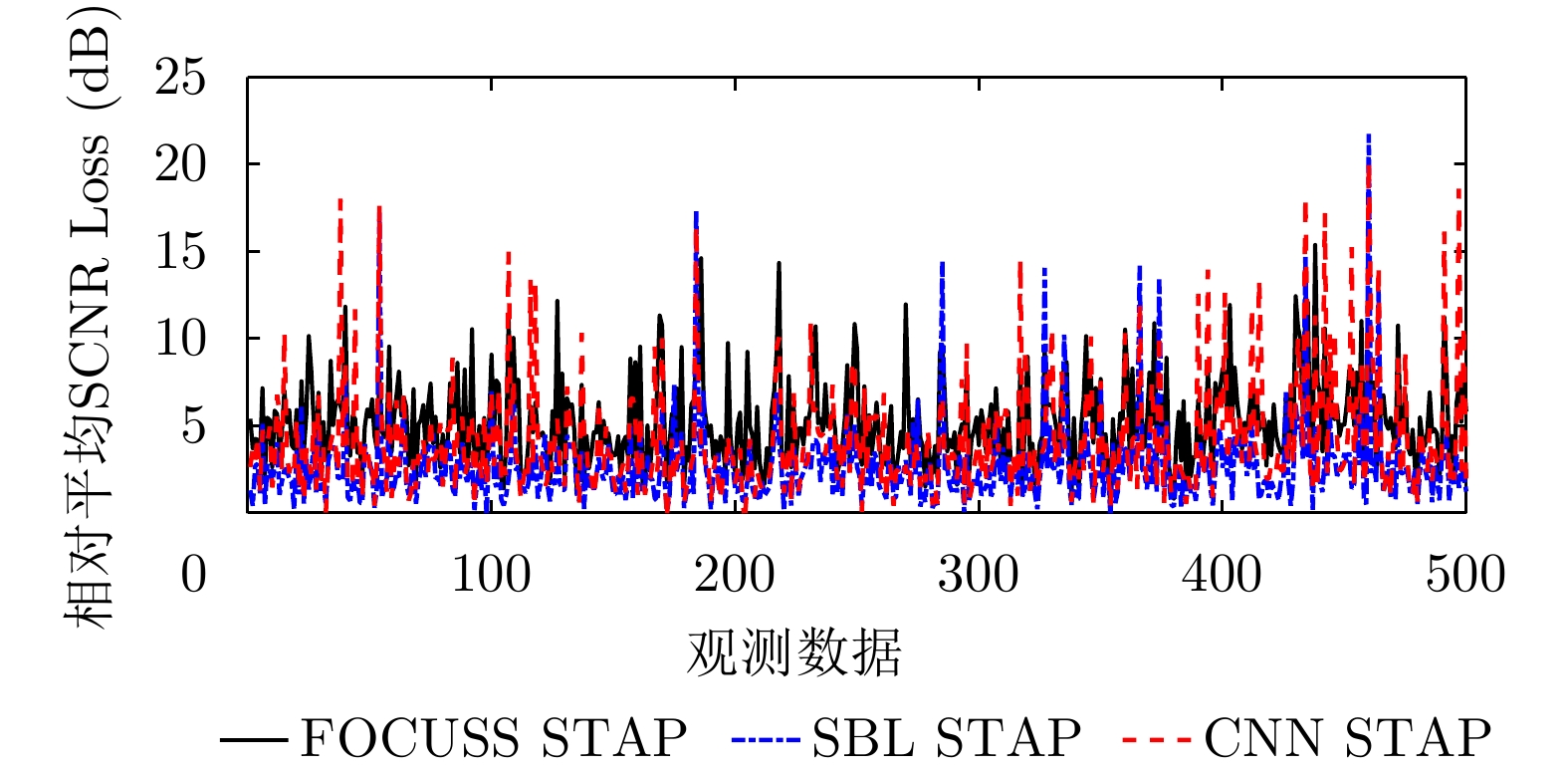| [1] |
林幼权, 武楠. 天基预警雷达[M]. 北京: 国防工业出版社, 2017: 1–2.
LIN Youquan and WU Nan. Space Based Early Warning Radar[M]. Beijing: National Defense Industry Press, 2017: 1–2.
|
| [2] |
HOVANESSIAN S A, JOCIC L B, and LOPEZ J M. Spaceborne radar design equations and concepts[C]. 1997 IEEE Aerospace Conference, Snowmass, USA, 1997: 125–136. doi: 10.1109/AERO.1997.574402. |
| [3] |
DAVIS M E. Technology challenges in affordable space based radar[C]. Record of the IEEE 2000 International Radar Conference, Alexandria, USA, 2000: 18–23. doi: 10.1109/RADAR.2000.851798. |
| [4] |
ROSEN P A and DAVIS M E. A joint space-borne radar technology demonstration mission for NASA and the air force[C]. 2003 IEEE Aerospace Conference Proceedings, Big Sky, USA, 2003: 1–444. doi: 10.1109/AERO.2003.1235073. |
| [5] |
ZUO Qunsheng, LIN Youquan, and WANG Youlin. The development of space-based early warning radar system[J]. Review of Electronics Science and Technology, 2004(3): 20–22, 19. doi: 10.3969/j.issn.1673-5692.2004.03.004 |
| [6] |
ZHU Qingming, JIN Shuling, and MENG Xiangling. Current developments and key technologies of foreign space-based warning radars[J]. Telecommunication Engineering, 2012, 52(6): 1054–1058. doi: 10.3969/j.issn.1001-893x.2012.06.047 |
| [7] |
|
| [8] |
LI Qing, LIN Youquan, and WU Nan. Analysis of development history and status for American space-base early warning radar[J]. Modern Radar, 2018, 40(1): 7–10. doi: 10.16592/j.cnki.1004-7859.2018.01.002 |
| [9] |
BRENNAN L E and REED L S. Theory of adaptive radar[J]. IEEE Transactions on Aerospace and Electronic Systems, 1973, AES-9(2): 237–252. doi: 10.1109/TAES.1973.309792 |
| [10] |
KOGON S M, RABIDEAU D J, and BARNES R M. Clutter mitigation techniques for space-based radar[C]. 1999 IEEE International Conference on Acoustics, Speech, and Signal Processing, Phoenix, USA, 1999: 2323–2326. doi: 10.1109/ICASSP.1999.758403. |
| [11] |
SCHUMAN H M, LI P G, SZCZEPANSKI W, et al. Space-time adaptive processing for space based radar[C]. 2004 IEEE Aerospace Conference Proceedings, Big Sky, USA, 2004: 1904–1910. doi: 10.1109/AERO.2004.1367973. |
| [12] |
PILLAI S, HIMED B, and LI Keyong. Effect of earth’s rotation and range foldover on space-based radar performance[J]. IEEE Transactions on Aerospace and Electronic Systems, 2006, 42(3): 917–932. doi: 10.1109/TAES.2006.248188 |
| [13] |
REED I D, MALLETT J D, and BRENNAN L E. Rapid convergence rate in adaptive arrays[J]. IEEE Transactions on Aerospace and Electronic Systems, 1974, AES-10(6): 853–863. doi: 10.1109/TAES.1974.307893 |
| [14] |
ZULCH P, DAVIS M, ADZIMA L, et al. The earth rotation effect on a LEO L-Band GMTI SBR and mitigation strategies[C]. 2004 IEEE Radar Conference, Philadelphia, USA, 2004: 27–32. doi: 10.1109/NRC.2004.1316390. |
| [15] |
LI Keyong, MANGIAT S, ZULCH P, et al. Clutter impacts on space based radar GMTI: A global perspective[C]. 2007 IEEE Aerospace Conference, Big Sky, USA, 2007: 1–15. doi: 10.1109/AERO.2007.353071. |
| [16] |
ZULCH P A, HANCOCK R H, MORAN W, et al. Transmit waveform diversity for space based radar[C]. 2016 IEEE Aerospace Conference, Big Sky, USA, 2006: 10–16. doi: 10.1109/AERO.2006.1655932. |
| [17] |
PAGE D A, HIMED B, and DAVIS M E. Improving STAP performance in bistatic space-based radar systems using an efficient expectation-maximization technique[C]. 2005 IEEE International Radar Conference, Arlington, USA, 2005: 109–114. doi: 10.1109/RADAR.2005.1435803. |
| [18] |
PAGE D A, HIMED B, and DAVIS M E. Higher order clutter mitigation in bistatic space-based radar systems using a knowledge-aided STAP approach[C]. 2006 IEEE Conference on Radar, Verona, USA, 2006: 459–464. doi: 10.1109/RADAR.2006.1631840. |
| [19] |
YU Wenxian, ZHANG Zenghui, and HU Weidong. STAP method for space based radar based on spectrum registration with non-uniformed frequency samples[J]. Journal of Electronics & Information Technology, 2009, 31(2): 358–362. doi: 10.3724/SP.J.1146.2007.01244 |
| [20] |
HALE T B, TEMPLE M A, and WICKS M C. Clutter suppression using elevation interferometry fused with space-time adaptive processing[J]. Electronics Letters, 2001, 37(12): 793–794. doi: 10.1049/el:20010494 |
| [21] |
HALE T B, TEMPLE M A, RAQUET J F, et al. Localised three-dimensional adaptive spatial-temporal processing for airborne radar[J]. IEE Proceedings - Radar, Sonar and Navigation, 2003, 150(1): 18–22. doi: 10.1049/ip-rsn:20030075 |
| [22] |
MENG Xiangdong, WANG Tong, Wu Jianxin, et al. Short-range clutter suppression for airborne radar by utilizing prefiltering in elevation[J]. IEEE Geoscience and Remote Sensing Letters, 2009, 6(2): 268–272. doi: 10.1109/LGRS.2008.2012126 |
| [23] |
SHEN M, MENG X, and ZHANG L. Efficient adaptive approach for airborne radar short-range clutter suppression[J]. IET Radar, Sonar & Navigation, 2012, 6(9): 900–904. doi: 10.1049/iet-rsn.2011.0359 |
| [24] |
Wu J X, WANG Tong, Meng X D, et al. Clutter suppression for airborne non-sidelooking radar using ERCB-STAP algorithm[J]. IET Radar, Sonar & Navigatition, 2010, 4(4): 497–506. doi: 10.1049/iet-rsn.2009.0121. |
| [25] |
DUAN Keqing, XU Hong, YUAN Huadong, et al. Reduced-DOF three-dimensional STAP via subarray synthesis for nonsidelooking planar array airborne radar[J]. IEEE Transactions on Aerospace and Electronic Systems, 2020, 56(4): 3311–3325. doi: 10.1109/TAES.2019.2958174 |
| [26] |
SARKAR T K, WANG Hong, PARK S, et al. A deterministic least-squares approach to space-time adaptive processing (STAP)[J]. IEEE Transactions on Antennas and Propagation, 2001, 49(1): 91–103. doi: 10.1109/8.910535 |
| [27] |
MELVIN W, WICKS M, ANTONIK P, et al. Knowledge-based space-time adaptive processing for airborne early warning radar[J]. IEEE Aerospace and Electronic Systems Magazine, 1998, 13(4): 37–42. doi: 10.1109/62.666835 |
| [28] |
BERGIN J S, TEIXEIRA C M, TECHAU P M, et al. Improved clutter mitigation performance using knowledge-aided space-time adaptive processing[J]. IEEE Transactions on Aerospace and Electronic Systems, 2006, 42(3): 997–1009. doi: 10.1109/TAES.2006.248194 |
| [29] |
WU Yong, TANG Jun, and PENG Yingning. On the essence of knowledge-aided clutter covariance estimate and its convergence[J]. IEEE Transactions on Aerospace and Electronic Systems, 2011, 47(1): 569–585. doi: 10.1109/TAES.2011.5705692 |
| [30] |
LI Jian, ZHU Xumin, STOICA P, et al. High resolution angle-Doppler imaging for MTI radar[J]. IEEE Transactions on Aerospace and Electronic Systems, 2010, 46(3): 1544–1556. doi: 10.1109/TAES.2010.5545209 |
| [31] |
SUN Ke, MENG Huadong, WANG Yongliang, et al. Direct data domain STAP using sparse representation of clutter spectrum[J]. Signal Processing, 2011, 91(9): 2222–2236. doi: 10.1016/j.sigpro.2011.04.006 |
| [32] |
SEN S. OFDM radar space-time adaptive processing by exploiting spatio-temporal sparsity[J]. IEEE Transactions on Signal Processing, 2013, 61(1): 118–130. doi: 10.1109/TSP.2012.2222387 |
| [33] |
YANG Xiaopeng, SUN Yuze, ZENG Tao, et al. Fast STAP method based on PAST with sparse constraint for airborne phased array radar[J]. IEEE Transactions on Signal Processing, 2016, 64(17): 4550–4561. doi: 10.1109/TSP.2016.2569471 |
| [34] |
YANG Zhaocheng, DE LAMARE R C, and LIU Weijian. Sparsity-based STAP using alternating direction method with gain/phase errors[J]. IEEE Transactions on Aerospace and Electronic Systems, 2017, 53(6): 2756–2768. doi: 10.1109/TAES.2017.2714938 |
| [35] |
DUAN Keqing, WANG Zetao, XIE Wenchong, et al. Sparsity-based STAP algorithm with multiple measurement vectors via sparse Bayesian learning strategy for airborne radar[J]. IET Signal Processing, 2017, 11(5): 544–553. doi: 10.1049/iet-spr.2016.0183 |
| [36] |
HINTON G E and SALAKHUTDINOV R R. Reducing the dimensionality of data with neural networks[J]. Science, 2016, 313(5786): 504–507. doi: 10.1126/science.1127647 |
| [37] |
HINTON G E, OSINDERO S, and TEH Y W. A fast learning algorithm for deep belief nets[J]. Neural Computation, 2006, 18(7): 1527–1554. doi: 10.1162/neco.2006.18.7.1527 |
| [38] |
KRIZHEVSKY A, SUTSKEVER I, and HINTON G E. ImageNet classification with deep convolutional neural networks[C]. The 25th International Conference on Neural Information Processing Systems, Lake Tahoe, USA, 2012: 1097–1105. doi: 10.5555/2999134.2999257. |
| [39] |
DONG Chao, LOY C C, HE Kaiming, et al. Learning a deep convolutional network for image super-resolution[C]. The 13th European Conference on Computer Vision, Zurich, Switzerland, 2014: 184–199. doi: 10.1007/978-3-319-10593-2_13. |
| [40] |
DONG Chao, LOY C C, HE Kaiming, et al. Image super-resolution using deep convolutional networks[J]. IEEE Transactions on Pattern Analysis and Machine Intelligence, 2016, 38(2): 295–307. doi: 10.1109/TPAMI.2015.2439281 |
| [41] |
RONNEBERGER O, FISCHER P, and BROX T. U-Net: Convolutional networks for biomedical image segmentation[C]. The 18th International Conference on Medical Image Computing and Computer-Assisted Intervention, Munich, Germany, 2015: 234–241. doi: 10.1007/978-3-319-24574-4_28. |
| [42] |
JIN K H, MCCANN M T, FROUSTEY E, et al. Deep convolutional neural network for inverse problems in imaging[J]. IEEE Transactions on Image Processing, 2017, 26(9): 4509–4522. doi: 10.1109/TIP.2017.2713099 |
| [43] |
MELVIN W L and SHOWMAN G A. An approach to knowledge-aided covariance estimation[J]. IEEE Transactions on Aerospace and Electronic Systems, 2006, 42(3): 1021–1042. doi: 10.1109/TAES.2006.248216 |
| [44] |
DUAN Keqing, YUAN Huadong, XU Hong, et al. An overview on sparse recovery space-time adaptive processing technique[J]. Acta Electronica Sinica, 2019, 47(3): 748–756. doi: 10.3969/j.issn.0372-2112.2019.03.033 |
| [45] |
陆军, 郦能敬, 曹晨, 等. 预警机系统导论[M]. 2版. 北京: 国防工业出版社, 2011: 158–160.
LU Jun, LI Nengjing, CAO Chen, et al. Introduction to Airborne Early Warning System[M]. 2nd ed. Beijing: National Defense Industry Press, 2011: 158–160.
|




 Submit Manuscript
Submit Manuscript Peer Review
Peer Review Editor Work
Editor Work





 DownLoad:
DownLoad:






